In today’s collaborative work realities, companies search for a way of building an ideal digital workspace across the entire organization. And Microsoft Teams is one of the best tools to do it. Create multiple teams, integrate your everyday apps, and collaborate via standard, private, and now, SHARED channels! What is this new feature? What are the benefits of shared channels? In which case should you use them? Well, in this article you will have all these questions answered! Stay with us and learn about shared channels in Microsoft Teams.
About Microsoft Teams shared channels
This year Microsoft has announced a new feature called Shared Channels. This option makes it easier to work with internal or guest users by inviting them to a shared channel in a team.
Shared channels are quite similar to private channels. Both private and shared channels present a sub-team within the main one. For example, a new SharePoint Site is created as soon as a team owner creates a shared channel.
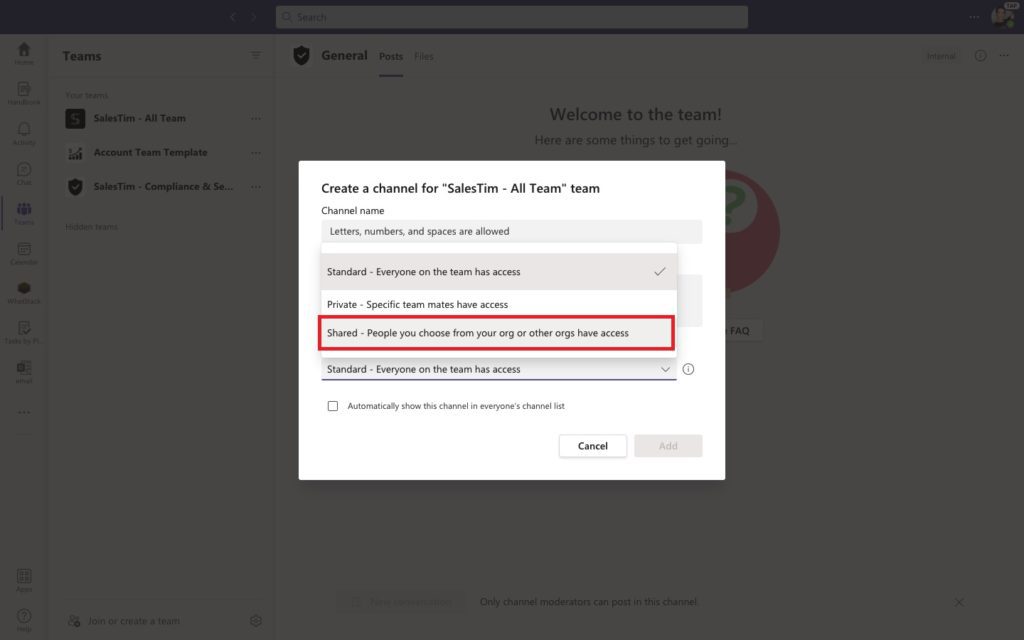
At the same time, the biggest difference is that people invited to a shared channel do not become team members or have a guest account. They don’t even need to switch tenants to work with you. And this is an amazing feature for effective collaboration. Shared channels from other tenants appear as if they were in your home tenant.
In addition, if you are a member of the team with the shared channel and you are a member of that shared channel – you will see it with the special icon in a list of channels.
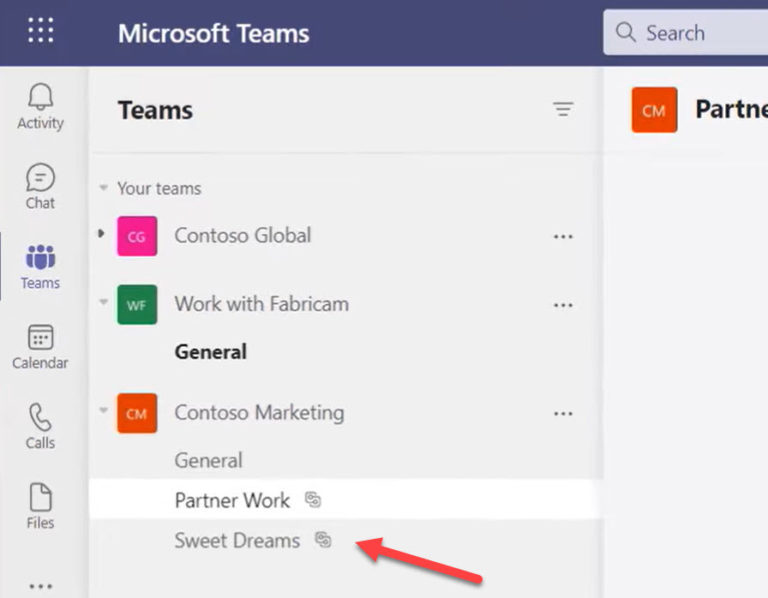
So, what will happen if you’re invited to a shared channel?
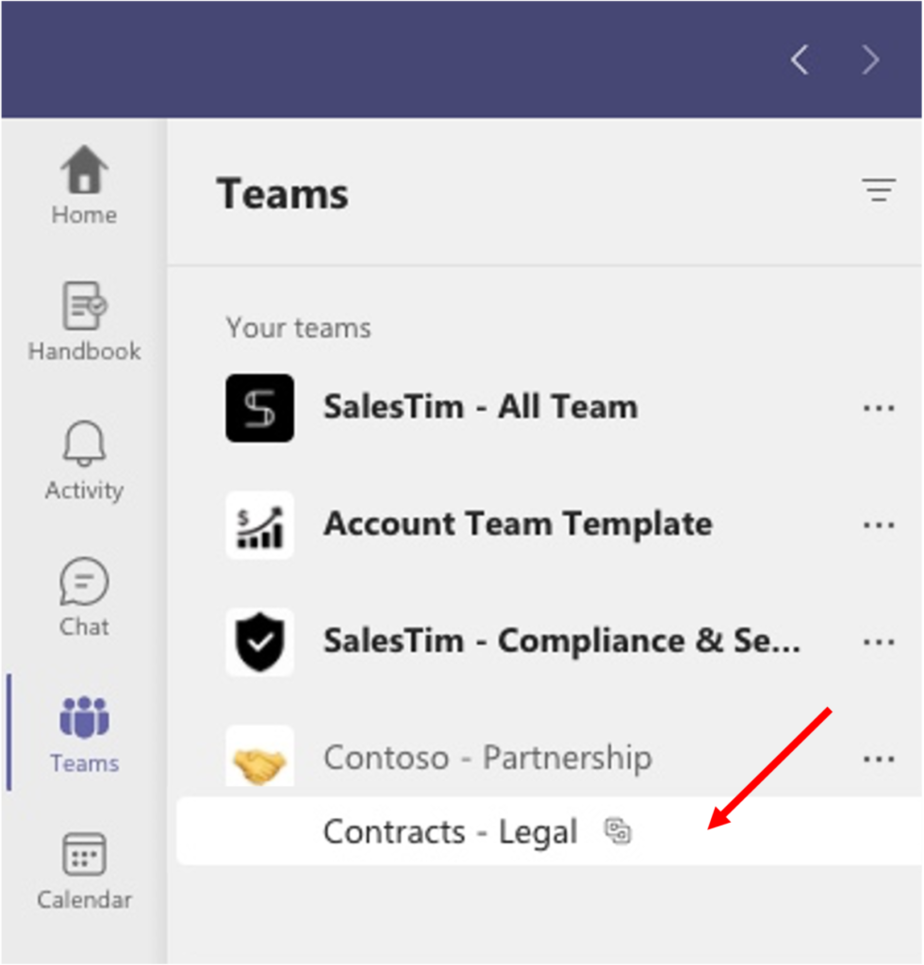
You will see it in your home tenant together with your organization’s teams. You can see channel conversations, work on the documents shared in this channel or its SharePoint site, respond to a chat, create tasks, or mark them as completed, etc. At the same time, none of the other channels in the team show up.
In addition, for all internal members of the shared channel, your account will have an External suffix. And this channel will have a visual mark saying that people outside the organization have access to this shared channel.
Benefits of Microsoft Teams shared channels
Now that we know what shared channels are, let’s list the main benefits of having them in your own teams.
No need for a separate team
First, there is no longer need to create a separate team to collaborate with external agents or your colleagues from another department. Moreover, you don’t need to grant guests access to your partners, customers, or suppliers to invite them to the whole team.
Instead, you can use shared channels that allow people to collaborate on projects, deals, and campaigns without wasting time switching between different tenants.
Security and compliance issues
Sometimes external or internal users cannot be invited to the team for security and compliance reasons. For instance, team members can work on highly sensitive and secured documents. In this case, users may choose other communication channels, including emails or messengers. This can lead to data leaks, a low level of productivity, and security issues.
Instead, with Microsoft Teams shared channels you can solve this issue. You’re able to communicate with both your colleagues and external agents, such as partners, customers, and suppliers in one place without granting them access to the entire team’s documentation.
Private discussions with external users
Finally, with shared channels, you can improve your collaboration and have private discussions with external agents without breaking the collaboration silos. Rest assured, all documents and conversations will be protected from the people outside the shared channel.
Microsoft Teams shared channels – use cases
So, let’s look at the Microsoft Teams shared channels feature using a real example. As we’ve mentioned before, you may create shared channels not only for external agents but also for people inside your organization who don’t form a part of your team. This makes sense when you need to share just a piece of information with your colleagues. Let’s delve into this example.
Internal collaboration with Microsoft Teams shared channels
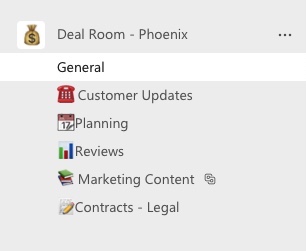
Suppose you have a team for your sales department collaboration. There your sales team shares deal details, account information, sales reports, etc. At the same time, it’s not only your salespeople who are closing sales deals. They are working with people from different departments, for example, marketing, product development, etc. So how do align these teams in one place and at the same time protect sensitive sales documents, such as contracts with prospects, transaction details, and so on?

White Paper: Microsoft Teams for Sales Management
- How to use Microsoft Teams for Sales Management
- Create Teams templates for your sales processes
- How to connect Salesforce with Microsoft Teams
Well, you can create an additional shared channel for your marketing department right in the sales team. Thus, your marketing managers can collaborate with salespeople in a single location without leaks of highly secured sales documents. Your marketing managers can work on sales proposals, start new marketing campaigns, and immediately receive updates from the sales team. Rest assured, your marketing team will be able to communicate only via shared channels, without access to other sales files and conversations.
External collaboration with Microsoft Teams shared channels
Now, let’s talk about external communication via shared channels. As we’ve mentioned before, you’re able to give access to your shared channel to any user outside of your tenant. This is an amazing feature that allows you to communicate more efficiently with partners, stakeholders, suppliers, customers, and so on.
Project Management collaboration with shared channels
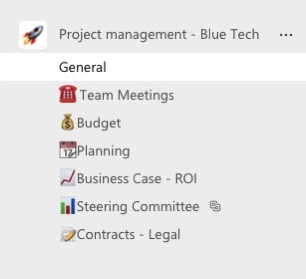
Suppose you have a team per each project. There your project team complete project tasks, track the progress and share project documents. At the same time, you will need to ensure compliance with project KPIs, reporting, and communication with your stakeholders.
To simplify communication with those who shouldn’t have access to all your project communication, you can create a shared channel. There you can collaborate with project experts, external stakeholders, or quality assurance experts.
Learn more about project management with Microsoft Teams.
Manage Department collaboration via Microsoft Teams shared channels
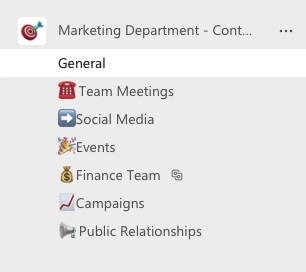
One more example concerns collaboration between members of different departments. Suppose you would like to have the same team for each of your departments – sales, marketing, product development, HR, and so on. To improve your collaboration efficiency, you can create a shared channel in each team for department collaboration. There you can invite legal, finance, and operations specialists to discuss critical issues and milestones, share high-secured files, and more. With shared channels, there is no need to add them to the entire team.
Collaboration Templates with shared channels
Finally, let’s go through how Collaboration Templates technology works with shared channels. Collaboration Templates allow you to streamline and templatize your business processes across the entire organization. You’ll have your own Collaboration Templates Catalog for any repetitive process: project management, sales deal collaboration, product launch, etc.
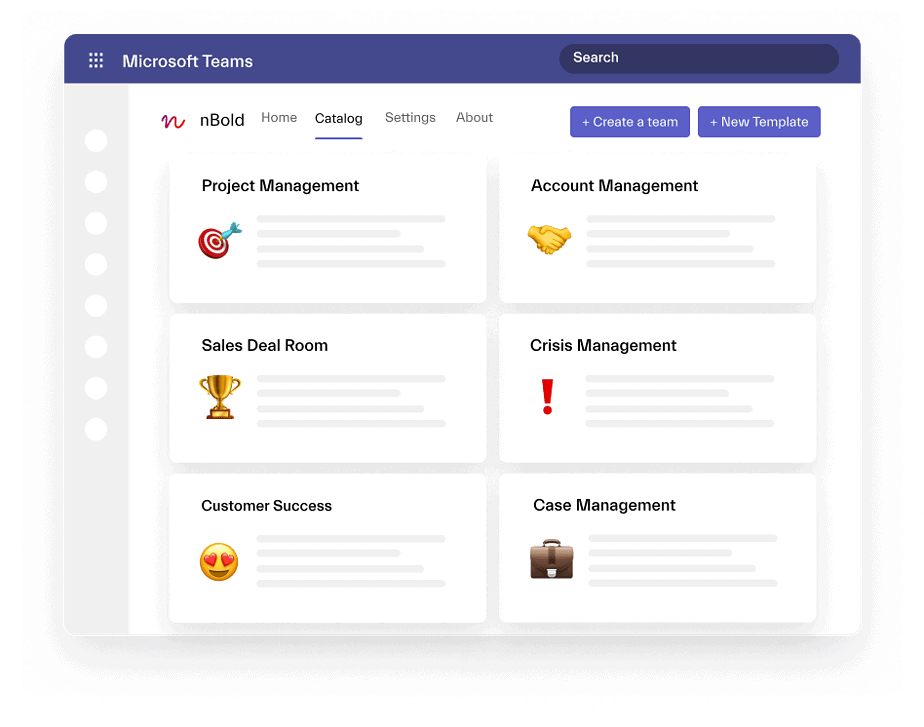
Each time your colleagues need a new collaborative workspace, they will need to choose the right template in the Catalog. In a few clicks, they will get an automatically created team with the structure, file templates, and all essential content. This includes standard, private, and shared channels. How can this help you with improving your collaboration efficiency? Well, let’s delve into the different scenarios.
Above we described how you can manage your department collaboration by building a team for each business department. Wondering how to integrate this system quickly?
Well, build a Business Department Template. You will need to create a team on which your template will be based just once. Add there standard and shared channels, upload file templates, and integrate your everyday apps.
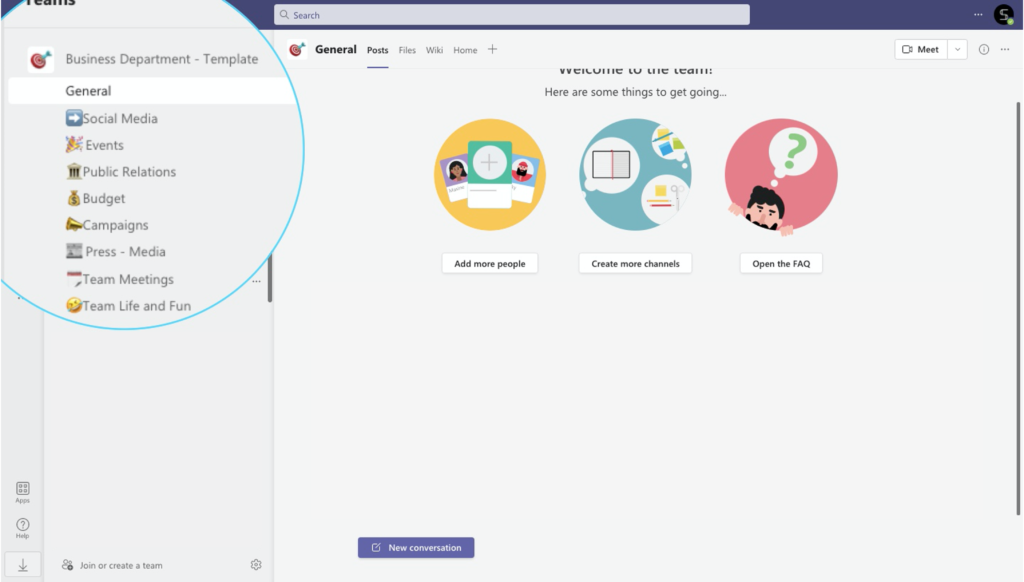
When the template creation is done, it will automatically appear in your own Catalog. And now each time you need a team for the department, automation will do everything for you. Just choose the right template according to the use case and click on create a new team. A fully created collaboration workspace will appear in a few seconds. Moreover, you will have the same structure, level of execution, and security settings from one department team to another.
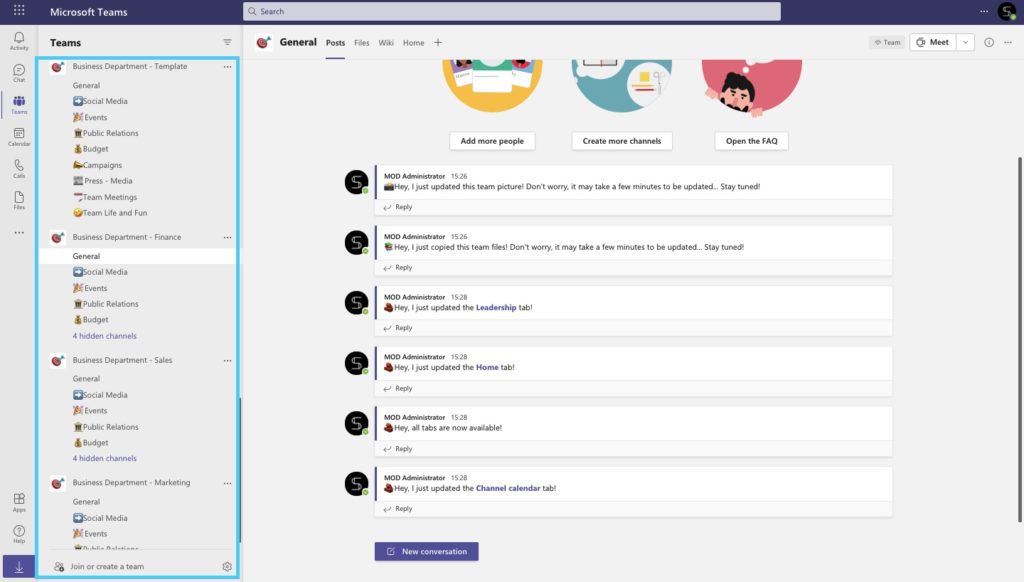
This works for every business scenario:
- Quickly start new projects with Project Management Template
- Get the same level of execution for each sales area with Deal Room
- Onboard new employees in the same way with Onboarding Process Template, and so on
Structure your work environment and build your first Collaboration Template with standard and shared channels, file templates, and all essential content. Improve your collaboration efficiency at scale!